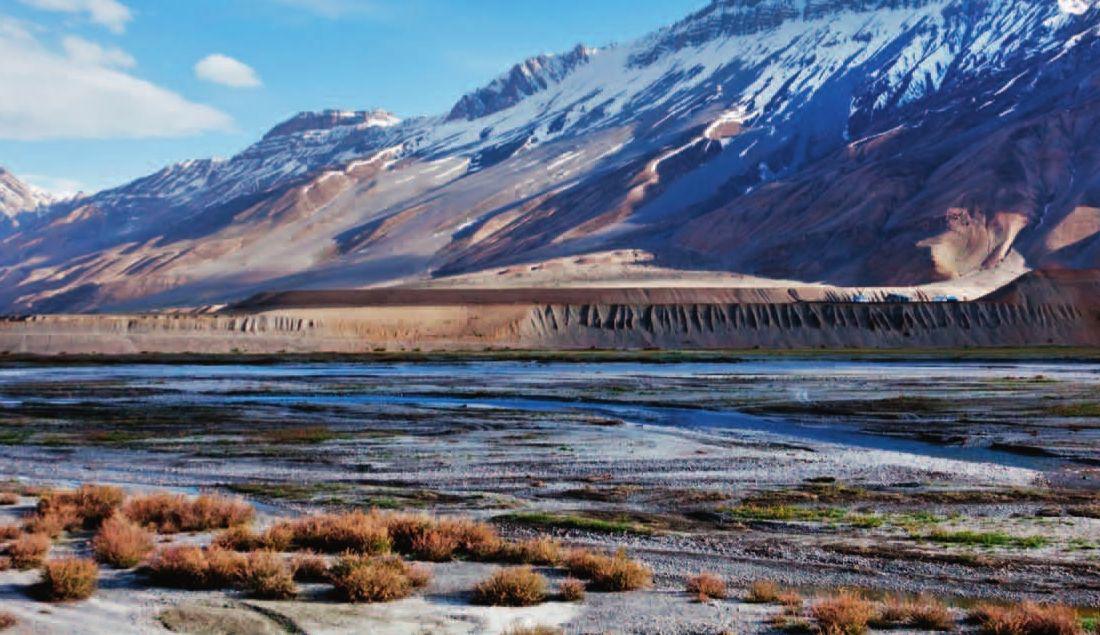Journey of awakening
2013-01-18ByRidhimaahluwalia
By Ridhima ahluwalia
ONE MORNINg my editor called me into his cabin, handed me the keys to the Mahindra Thar and said, “Here is your working vacation…” What made things even more exciting was the fact that the car was not being given for just another test drive but for a special drive to Asias highest continuously inhabited village—Komic, from the national capital.
Located at a height of over 14,000ft Komic is as removed from the clamour of the world we inhabit in the plains as one can ever imagine. From Delhi there are two routes to reach Komic. One is via Shimla, which takes you to rampur in the Kinnaur Valley, reckong Peo, Nako and then to Kaza in the Lahaul-Spiti Valley. From Kaza its just about 30 km to Komic. The other is to Manali from where you cross rohtang La before you get to Koksar where the road bifurcates, one going to Leh. The other heads towards Kunzum La, Losar, Key Monastery and then Kaza. rather than take the same route on the way up as well as down, we decided, all in the name of adventure, to explore both routes. So, on the way up we would take the Manali route, while on the way down we would return via Shimla.
We reached Manali sometime in the evening, in part thanks to our having taken a shorter, slower and badly surfaced route. The route from Manali to Kaza, via rohtang, Koksar and Losar is far from a smooth drive. In fact, from the amount of tarmac one actually encounters, one could easily brand the route as an off-road section! Nonetheless, the almost non-stop views of snow-capped peaks kept our mind away from the bumpy earth below.

In fact there seemed to be little maintenance work having been done on the 157-km stretch of road connecting Koksar with Kaza. Further ahead we realised that not all of the winter ice and snow had been cleared off and soon we found ourselves steering the jeep through treacherously slippery ice and snow.
No sooner had we cleared the snow and breathed a sigh of relief when we saw the road ahead blocked by a pile of rocks! This is when we discovered how invaluable a go-anywhere jeep can be in these terrains. We slotted the Thar into 4WD and rumbled forward bypassing the rocky pile and into slush. Ahead we saw clear flowing water and it was only then that it dawned on us that the stone road block was there because the bridge across the stream ahead had been washed away!
Kunzum was sheer majesty surrounded by giant mountains as we cross it to get into the Spiti—a long valley, walled in by sky-scraping crests, its language, landscape and culture more Tibetan than Indian. At Losar we took a quick pit stop and filled up on some light snacks and steaming cups of tea. Our next stop was Key Monastery established over a year back. It is a reputed training centre for lamas. We drove another 12 km, weary to the bones, to hit Kaza and find ourselves exhilarated by the stunning views of Spiti Valley. As nightfall approached the air got colder and it became freezing.
The following morning the excitement in the air was palpable as we started the drive to Komic, our final destination on this journey before we would head back down. We hit a gravel trail full of debris. Further ahead even the trail disappeared but we continued on our adventure and made our own road forward, a freedom that the Thars rugged construction and go-anywhere ability allows us to do.
No mobile signals and not another human being in sight till we reached a fenced village called Langza. Fenced, we were told by the people of Langza, to keep at bay snow leopards that often came prowling. Though breathtakingly beautiful in its starkness, things can get taxing at Komic. At such high altitudes and situated in a landscape devoid of much vegetation the air was rarefied. Hence breathing was laboured and the sun seemed to shine brighter with less air to absorb it.
This journey was fraught with danger, bad roads and a total removal from my regular world. No Facebook, no calls, nor SMS-es. It should have been frightening, but it wasnt. In fact it was strangely liberating.
